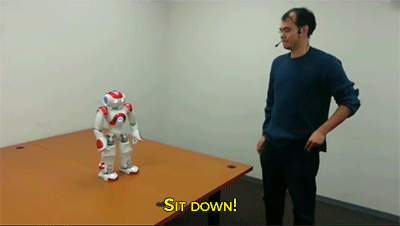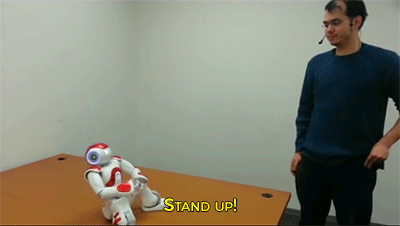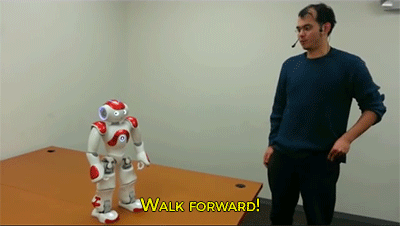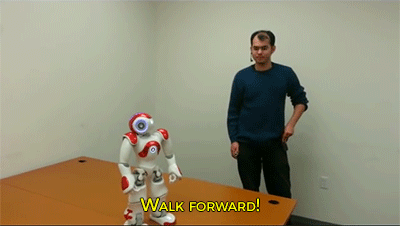Scientists Extend An Atom’s Lifetime With A Mirror

Scientists extend an atom’s lifetime with a mirror
Scientists from Chalmers University of Technology have been able to extend the lifetime of an artificial atom, allowing it to remain charged for up to ten times longer. They achieved this by placing the artificial atom in front of a short circuit, which acts as a mirror. The distance between the atom and the mirror affects how long the atom “lives,” which is the time from when an atom is charged to when it returns to its ground state.
Research team leader and Professor of Physics Per Delsing says, “We can vary the lifetime of the atom by changing the distance between the atom and the mirror. If we place the atom at a certain distance from the mirror the atom’s lifetime is extended by such a length that we are not even able to observe the atom.”
Know more at: http://futurism.com/links/scientists-extend-an-atoms-lifetime-with-a-mirror/
More Posts from Curiositytherover and Others

Titan Beyond the Rings






Almost a month ago, the spaceflight company Blue Origin sent a rocket up to the edge of space and then guided it gracefully back down to earth, intact. It was a historic first.
But Blue Origin’s major competitor, SpaceX, was quick to point out that the rocket wasn’t going fast enough (or sideways enough) to place a satellite into orbit - just 4,600 kph (~2,860 mph). It went straight up, and then straight down.
Now, SpaceX has managed to put 11 satellites in orbit with a “reusable” rocket. Their rocket didn’t just go up and down - it reached a horizontal velocity of 6,000 kph (3,600 mph) before returning to earth. If SpaceX is able to refurbish the rocket and use it in another launch, they’ll have figured out a way to dramatically reduce the cost of spaceflight.
Here’s the full webcast. And here’s the full story.
Video credit: SpaceX









If Our Universe Is So Old and Vast, Then Where Are All the Aliens?
Read more at: http://futurism.com/images/ http://futurism.com/images/if-our-universe-is-so-old-and-vast-then-where-are-all-the-aliens/




Scientists Are Teaching This Robot To Say “No” Humans - watch the full video

Source: https://imgur.com/c4LP6eW

On 15 March 2009, when the space shuttle Discovery was about to launch into orbit, a wounded bat grabbed ahold of its fuel tank to become an officially recognised stowaway, despite safeguards that are supposed to keep such things from happening. He was a bat pioneer hell-bent on glory, or so we choose to believe.
So what exactly happened here? The story started on a mild Sunday evening at NASA’s Kennedy Space Centre, as crew members began prepping to launch the STS-119 mission. As the crew made their rounds checking for icy buildup on theDiscovery fuel tanks and whatnot, they were shocked to find a small free tail bat clinging to the tank’s foam insulation.
“Based on images and video, a wildlife expert who provides support to the centre said the small creature was a free tail bat that likely had a broken left wing and some problem with its right shoulder or wrist,” NASA explained. Unfortunately, it did not appear to be wearing a tiny spacesuit at the time.




Today in the robot takeover: Disney has built a remote-control device that can climb walls while Singapore scientists created an eerie artificial being that can remember your past conversations (and may haunt your dreams.)

It’s not (completely) your fault. -ScienceAlert
Where did the stars go?
One day, you find time to get out of the clutches of your work life and you decide to gaze at the stars.
Something which you used to do when you were a kid.
But the city life with all its glory has diverted you to other ‘fun’ things.

But to your amazement you find that the density of stars has drastically decreased.
‘That’s preposterous’- you say to yourself. That can’t be true.
You are positive that it has something to do with you aging.

You decide to go to your eye doctor and do a thorough check up. The doctor concludes that your eye sight is perfect.

You are delighted, knowing that your eye sight is perfect and that you are going to see those stars again. You spend all day lamenting about it.
You crave for the starry night sky. And you are sure it would look like so :

So, the following night you go to the terrace to rejoice at the sight. But yet see that the sky is not starry at all as you had marveled.
In fact, there is a stark difference between what you had in mind and what you observe.

You get increasingly concerned about it. You ask a few people around and you find out that the answer to this mysterious phenomenon is Light Pollution..
And you start to explore this new bizarre form of pollution.
What is Light Pollution?
Alteration of natural light levels in the outdoor environment owing to artificial light sources.
What does it do?
The impact of light pollution is to reduce our eye’s limiting magnitude. That means that we can see fewer and fewer stars.

The differences in the number of stars that can be seen due to varying levels of background light pollution.
Light pollution competes with starlight in the night sky for urban residents, interferes with astronomical observatories, and, like any other form of pollution, disrupts ecosystems and has adverse health effects.
Light pollution is a side effect of industrial civilization. Its sources include building exterior and interior lighting, advertising, commercial properties, offices, factories, streetlights, and illuminated sporting venues.
How can I prevent it?
(Light Pollution and How to Reduce It)
The solution does not involve curtailing nightlife, hampering the nighttime economy or compromising safety. It just requires directing lights where they’re needed and eliminating waste.
Here what you can do prevent light pollution.
1) Only turn on outdoor lights when needed—or install motion sensors.

2) Point the lights downward and outfit them with “shields” to prevent light from traveling sideways. The goal is to shine them only where illumination is wanted—not in people’s eyes or on other people’s property (a case of “light trespass”).

3) Lower the wattage of your bulbs and put them on dimmers. Bright lights and dark shadows don’t improve safety, but reduce it.

4) Close curtains at night to keep indoor light in. If you live in a multi-story building, use black-out curtains to prevent bird crashes.

And, of course, please use energy-efficient lights to cut global warming emissions even more than you’ll be doing already.
Inspiration :
Here’s what the night sky looks now, with light pollution.

And here’s how it will look like without it.

This post is to educate all the followers of the blog about Light Pollution, and raise awareness about it.
“Stars can’t shine without Darkness”
and hence i urge you to do your part to curbing Light Pollution.
Have a good day :)
PC: NASA, classroomclipart, Umut Siliman, eschooltoday,medscape

Antibiotic Resistance: Scientists Uncover the Secret Behind This Powerful Weapon
Of course, humans and bacteria are somewhat different. As a result, it’s no surprise that these tiny creatures transfer genes differently from humans and even plants.
Besides binary fission, where the genetic material is segregated equally into two daughter cells, bacteria also have another method of gene transfer—namely, horizontal gene transfer (HGT). HGT has long been known to be responsible for spreading unique traits in bacteria, especially antibiotic resistance. Though we’ve long known that it is able to exert a rather strong effect, the why (or how) has remained a mystery.
At least, until now.
Researchers from Oxford University have demonstrated, through mathematical modelling, that the secret is migration, whereby movement between communities of microbes greatly increases the chances of different species of bacteria being able to swap DNA and adopt new traits.
Read more & check the video at http://futurism.com/links/antibiotic-resistance-scientists-uncover-the-secret-behind-this-powerful-weapon/
-
 cyphorical reblogged this · 9 years ago
cyphorical reblogged this · 9 years ago -
 notangelmorell liked this · 9 years ago
notangelmorell liked this · 9 years ago -
 drugpugs-blog reblogged this · 9 years ago
drugpugs-blog reblogged this · 9 years ago -
 thecraziestcorner reblogged this · 9 years ago
thecraziestcorner reblogged this · 9 years ago -
 c3rn reblogged this · 9 years ago
c3rn reblogged this · 9 years ago -
 nightelfmercenary liked this · 9 years ago
nightelfmercenary liked this · 9 years ago -
 official-macaroni liked this · 9 years ago
official-macaroni liked this · 9 years ago -
 peculiarnotion-blog liked this · 9 years ago
peculiarnotion-blog liked this · 9 years ago -
 ihatethissignin reblogged this · 9 years ago
ihatethissignin reblogged this · 9 years ago -
 liveoffthenoisefloor reblogged this · 9 years ago
liveoffthenoisefloor reblogged this · 9 years ago -
 bagofmorbidity liked this · 9 years ago
bagofmorbidity liked this · 9 years ago -
 jeffmontino reblogged this · 9 years ago
jeffmontino reblogged this · 9 years ago -
 hectorbpoole liked this · 9 years ago
hectorbpoole liked this · 9 years ago -
 skulldeaded reblogged this · 9 years ago
skulldeaded reblogged this · 9 years ago -
 gnomeonasnail liked this · 9 years ago
gnomeonasnail liked this · 9 years ago -
 b0rd3ring-on-1nsane liked this · 9 years ago
b0rd3ring-on-1nsane liked this · 9 years ago -
 astronut317 reblogged this · 9 years ago
astronut317 reblogged this · 9 years ago -
 mxtchxx liked this · 9 years ago
mxtchxx liked this · 9 years ago -
 odysseys-blood reblogged this · 9 years ago
odysseys-blood reblogged this · 9 years ago -
 odysseys-blood liked this · 9 years ago
odysseys-blood liked this · 9 years ago -
 sabs-is-angry liked this · 9 years ago
sabs-is-angry liked this · 9 years ago -
 bryskibroni liked this · 9 years ago
bryskibroni liked this · 9 years ago -
 lesbeanan liked this · 9 years ago
lesbeanan liked this · 9 years ago -
 montythetrombonist liked this · 9 years ago
montythetrombonist liked this · 9 years ago -
 spoiledsugarskulls liked this · 9 years ago
spoiledsugarskulls liked this · 9 years ago -
 setgendertono liked this · 9 years ago
setgendertono liked this · 9 years ago -
 neondonutluver reblogged this · 9 years ago
neondonutluver reblogged this · 9 years ago -
 femcel2-blog reblogged this · 9 years ago
femcel2-blog reblogged this · 9 years ago -
 neondonutluver liked this · 9 years ago
neondonutluver liked this · 9 years ago -
 natalieportmanofficial reblogged this · 9 years ago
natalieportmanofficial reblogged this · 9 years ago -
 sunnaflowers reblogged this · 9 years ago
sunnaflowers reblogged this · 9 years ago -
 doispicos liked this · 9 years ago
doispicos liked this · 9 years ago -
 runawayravens reblogged this · 9 years ago
runawayravens reblogged this · 9 years ago -
 cleodead reblogged this · 9 years ago
cleodead reblogged this · 9 years ago -
 will-ferret reblogged this · 9 years ago
will-ferret reblogged this · 9 years ago